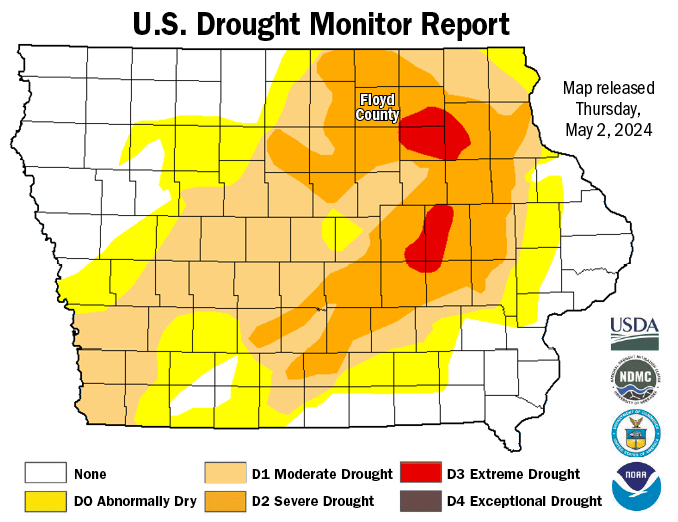Floyd County farmland value declines slightly in latest ISU land survey

By Bob Steenson, bsteenson@charlescitypress.com
Iowa farmland values increased slightly this year, according to the latest information from the Iowa State University Land Value Survey, but they decreased a little in Floyd County and some other neighboring counties.
The average farmland value per acre in Floyd County dropped 1.1%, from $7,724 in 2018 to $7,654 this year.
Neighboring counties that saw decreases were Chickasaw, Bremer, Howard and Mitchell.

Neighboring counties that saw farmland value increases were Butler, Cerro Gordo, Franklin and Worth. Franklin County saw the biggest increase, at 2.8%, from $7,599 in 2018 to $7,809 this year.
The 2019 ISU Land Value Survey reported a 2.3% increase to $7,432 per acre in average Iowa farmland values from November 2018 to November 2019, according to Wendong Zhang, an ISU economics professor working with the Center for Agricultural and Rural Development, and Iowa State University Extension and Outreach.
“This modest rise, which barely exceeds inflation, is the second increase in Iowa farmland values over the past six years, but still represents a 15% decline from the 2013 peak in nominal land values, or a 23% drop in inflation-adjusted values,” Zhang said in his report released last week.
He said the state average increase is largely due to lower interest rates, limited land supply, strong yields, and to some extent the trade aid payments to farmers.
“On the other hand, the magnitude of this increase only slightly outpaced inflation, and we are still faced with low commodity prices and trade uncertainty,” he said.
He said the report shows the relative stability of Iowa farmland values and said it is unlikely to see a replay of the 1980s farm crisis that was marked by a sudden collapse in the land market.
Still, Zhang said, there are “growing signs of farm financial stress as well as stress on the family and mental health.”
“With substantial uncertainties in crop production, agricultural trade and commodity price fluctuations, the farm sector is still not fully recovered,” he said.
All crop reporting districts reported an increase in land values except for the Northeast district which saw a decline of 2.9%.
In general, the results from the 2019 Iowa State University Land Value Survey echo results from other surveys, which all showed relatively stable farmland market trends, the report said.
Other takeaways from the annual report, which ISU has been doing since 1950:
• The highest value was estimated for Scott County, at $10,837 per acre.
• The lowest value was in Decatur County, at $3,586 per acre.
• Eighty-two of 99 counties in Iowa reported a rise in land value, while the remaining 17 counties saw a decline.
• The largest percentage increase, 5.4%, was reported in both Boone and Story counties.
• The largest dollar decrease was reported in Clay County, $151 per acre, while Story County saw the largest dollar increase, $455 per acre.
• The highest percentage decrease, 2.2%, was reported in Clay and Allamakee counties.
The survey is an expert opinion survey based on reports by licensed real estate brokers, farm managers, appraisers, agricultural lenders, county assessors and selected individuals considered to be knowledgeable of land market conditions.
Respondents were asked to report for more than one county if they were knowledgeable about the land markets. The 2019 ISU Land Value Survey is based on 679 usable county-level land value estimates provided by 553 agricultural professionals.
Twenty-five percent of respondents reported lower sales in 2019 relative to 2018. On the other end of the spectrum, just 27%reported more sales, and 48% reported the same level of sales in 2019 relative to 2018.
Weather and tariffs on agricultural commodities such as U.S. soybeans were the second- and third-most frequently mentioned negative factor, mentioned by 12% of respondents.
Cash/credit availability, higher input costs, and an uncertain agricultural future were each mentioned by 3% to 7% of respondents.









Social Share